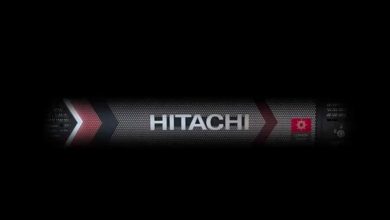
Organisations are less likely to excel in their business activities and materialise their goal of maximum output if they solely rely on a single IT architecture. This is because the modern age, often termed the era of digital transformation, is so complex that no single model can offer all-inclusive solutions. This is precisely why the idea of a hybrid cloud fascinates CIOs and CTOs.
The phrase, “Best of both worlds” perhaps perfectly defines the strategies prevalent in the hybrid cloud, which enables business entities to boost their organisational operations with a combination of one or more types of IT environments, such as on-premises, bare metal, private and public cloud. In other words, organisations can flexibly customise their workloads according to their needs by bringing the relevant tools and resources from various infrastructures and deploying them into a single, highly modern hybrid environment.

Building Blocks of a Modern Hybrid Cloud Architecture
Just like cells and tissues are the building blocks of a human body, a hybrid cloud is also shaped and propped up by some fundamental pillars, without which it will collapse- just like any structure with a fragile foundation.
Platform: Although major cloud vendors provide IaaS offerings and various solutions, there are notable differences in terms of tools and interfaces since every provider has its own management and monitoring tools. On the one hand, it is beneficial but simultaneously, it can cost businesses visibility and operational simplicity. Therefore, organisations must secure a single management solution that integrates well across the applications and infrastructures, providing businesses with greater visibility and operational smoothness.
Operating System: With an OS system providing a single and unified set of tools, organisations can manage and monitor their organisational operations well with better control and visibility. Because each environment uses the same operating system, workloads and apps can move across different environments easily and without APIs complexities that can hinder the upgradation of applications. This not only boosts the universality and performance of applications but also ensures interconnectivity and integrity between different departments of the organisation.
The portability of workloads: Unlike traditional cloud approaches which focus more on the connectivity between the environments, the modern hybrid environment emphasises the portability of workloads, allowing organisations to choose the best setup for any task. In other words, businesses can leverage cloud-based technologies, break the applications into smaller and independent components and develop and deploy them across various clouds. This results in better manageability, reliability and performance of business operations.
Security: With challenges like data migration and additional complexities, security can be a highly concerning factor in modern hybrid cloud setup as organisations have to fortify their safety domain across all surfaces but with the right tools and strategies, a robust security apparatus can be ensured. The interconnectivity element prevalent in the modern hybrid cloud guarantees disaster recovery since it enables businesses to standardise the needless cloud storage and place sensitive data according to the requirement.
Nevertheless, executing and maintaining these building blocks is not a walk in the park as there can be issues regarding visibility, security, manageability and more. As a result, businesses seek the services of industry-leading solutions like those provided by Red Hat Enterprise Linux and Microsoft Azure.

RHEL and Microsoft Azure provide a solid foundational platform for modern hybrid cloud operations. By shifting focus from infrastructure to business value, both these companies enable organisations to ensure the swift launch of applications without any deployment or hardware configuration or even workforce training, as well as integrating on-premises and cloud-native apps and workloads through a robust hybrid foundation. With inclusive, certified and Independent Software Vendor (ISV) experts and partners, organisations can further enhance and customise their cloud environment.
Red Hat Enterprise Linux’s security suite, which is incorporated integrated security features, including but not limited to Security-Enhanced Linux (SELinux) and Mandatory Access Controls (MAC), plays a crucial role in ensuring fortified operations across the entire hybrid setup through centralised identity, management and access controls. Due to its OpenSCAP certification, RHEL specialises in patch management, best security configurations and other security protocols. Likewise, Microsoft Azure shields data as it moves across different environments. It is able to monitor Red Hat VM-related networks and cloud services for known attack patterns and post-breach activity, and leverages technologies and processes – such as intrusion and anomaly detection, distributed denial-of-service (DDoS) attack prevention, and behavioural analytics – to continually reduce security risks.
With market-leading management and automation offerings, Red Hat and Microsoft allow businesses to manage all the cloud resources according to their organisational needs. Adopt an open hybrid cloud strategy based on open-source technologies, and fortify your modern hybrid cloud foundation to architect, develop, deploy and run all sorts of applications and workloads with utmost portability, scalability, speed and much more.
By choosing Red Hat Enterprise Linux and Microsoft Azure, you can be among the thousands of customers highly reliant on these two tech giants and make your modern hybrid cloud setup stronger than ever before, and that too, with a single and unified interface.
Click on the link below to find out how you can successfully embrace a hybrid cloud future for your enterprise with Red Hat and Microsoft.





